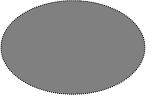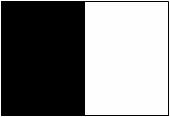Translated from Chinese by Sherwin Lu
(Including all quotations from classics with copy right)
EDITOR’S NOTE:
Classical Chinese philosophy, as the author has pointed out, is the foundation of the whole Chinese civilization, and its basic categories, as are drastically different from those in Western philosophy, constitute its foundation. This terse but richly informing essay provides a solid base for further exploring and gaining a truthful understanding of Chinese culture. Time will prove its significance in the development of a new world philosophy through mutually respectful communications between existing philosophies of the present-day world.
AN ABSTRACT
Philosophies of different civilizations are based on different patterns of thought. While western thought starts from a dual point of view, not covering the whole: the subjective and the objective are diametrically opposed and mutually exclusive without penetration into each other, the East has a holistic worldview, with pairs of opposites mutually interconnected and balanced. Classical Chinese philosophy has evolved around the following three pairs of categories: Tao vs. law; Name vs. Substance; Yin vs. Yang.
Tao and law are the two sides of a coin: the laws and decrees of the state should be derived from the Tao, the highest natural principle governing everything in existence, and the Tao should run its course in human society through the law. Therefore, it is considered everybody’s duty to comply with the Tao and the law. This was discussed in Yellow Emperor’s Four Canons, Guan Tzu, Han Fei Tzu, and many other classics.
The name-substance antithesis was also discussed by almost all the pre-Chin scholars representing all schools of thought. In essence, it implies a system of discourse on “responsibility”. The legal code of Chin Dynasty unearthed in the 1970s embodies the application of the philosophical idea of “checking substance against name” in the institution of law during the great golden times of China’s Chin and Han dynasties.
Yin and Yang, representing all kinds of interacting pairs of opposites, are not only mutually restraining but also mutually complementary and always transforming into each other towards a balance…. Recognizing the existence of interaction between the observer and the observed is important to the functioning of all complex systems from the observation of an electron to the functioning of an organism as treated by medicine, to the operation of the stock market, to the whole politico-economic system of a society, to the whole cosmos.
A new world philosophy would not come about unless a truthful comprehension of Chinese philosophy is achieved instead of arbitrarily breaking it down in terms of Western paradigms as many Chinese scholars have been doing since last century.
THE TEXT
Philosophies born of different civilizations have engendered different systems of knowledge as shared by each society. The “common sense” in one culture might appear ridiculous in another. The following comparison, aided by diagrams, between the different thinking patterns with their applications in medical practice can illustrate this point:
|
Civilization |
Pattern of thought |
Medicine |
|
Primitive |
No distinction between the subjective and the objective; believe in a mystic law of mutual penetration, or mutual influence between things through the work of a mystic force. |
 |
If the daughter is sick, the mother takes medicine. |
|
Western |
Dual point of view, not covering the whole: the subjective and the objective are diametrically opposed and mutually exclusive without penetration into each other. |
 |
“Treat the head when the head aches, and treat the foot when the foot aches”, -- without a systematic view of the whole body. |
|
Chinese |
Holistic worldview, with pairs of opposites mutually interconnected and balanced, complementing and restraining each other |
 |
Diagnosis and treatment based on an overall analysis of the illness and the patient’s general condition. |
|
|
|
|
|
|
As a result of the difference in the existing philosophies, and hence the difference in the corresponding world outlooks and ways of thinking, people educated exclusively in Western culture (which originated on the coast of the Mediterranean) find it difficult to understand the Chinese society and its culture, from its medical thought to its politico-economic system. The purpose of this essay is, through a survey of the basic categories in classical Chinese philosophy, to present a thought system which serves as the all-encompassing foundation for that philosophy.
Classical Chinese philosophy is the source of the Chinese thought pattern, from which the Chinese people derive their way of thinking, of how to think of the world. It has served as the superstructure and theoretical guideline for traditional Chinese politico-economic system and for the native practical knowledge system as well. This philosophy has evolved around the following three pairs of categories, to be discussed separately:
1. Tao vs. law;
2. Name vs. substance;
3. Yin vs. Yang. |



